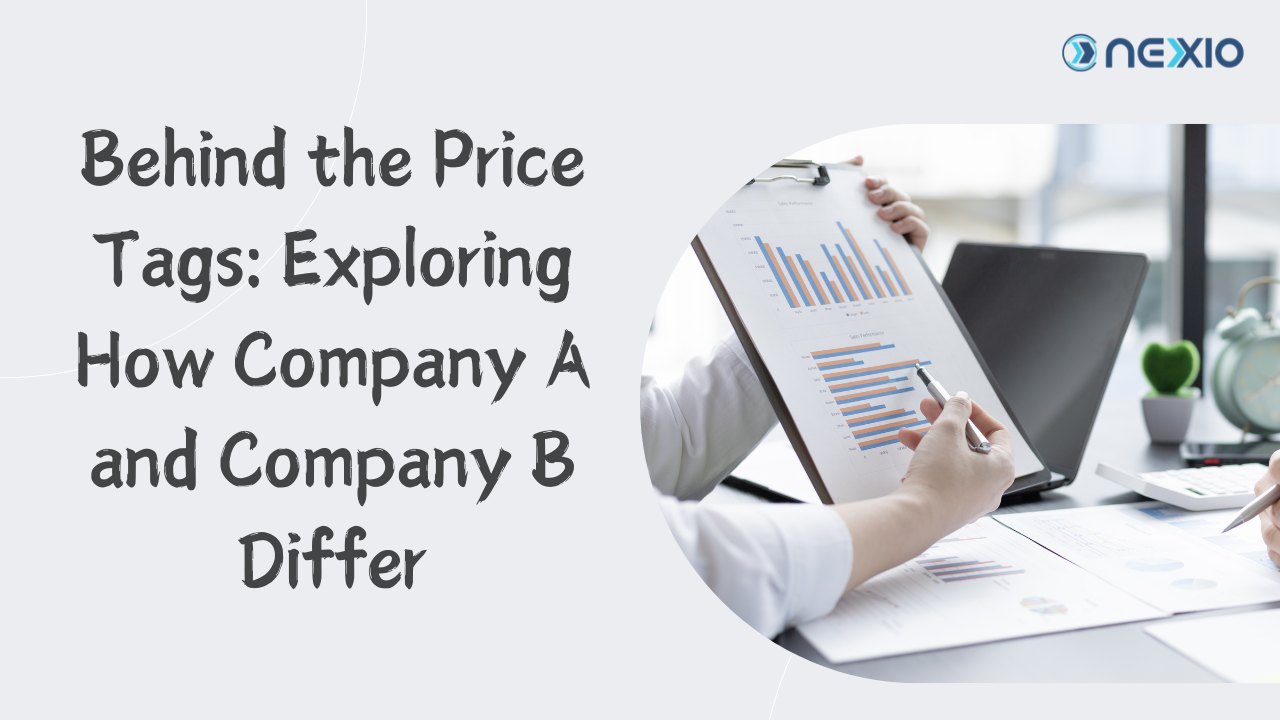Have you ever stared at two similar products on a shelf, one significantly cheaper than the other, and wondered: “What’s the catch?” We’ve all been there. Price tags are silent sentinels, offering little explanation for the value hidden beneath the surface. But fear not, curious consumer! Today, we’re ripping off the price tag veil and diving into the fascinating world behind those numbers.
Company A vs. Company B: A Tale of Two Business Models
Let’s imagine we’re comparing sneakers. Company A boasts a sleek, minimalist design at a price that makes your jaw drop. Across the aisle, Company B offers a feature-packed shoe with a price tag that could buy you lunch. So, what gives? Here’s where things get interesting:
- Materials Matter: Company A might use cheaper synthetics, while Company B utilizes premium, more durable leather. This impacts both comfort and longevity.
- Manufacturing Magic: Company A might source its shoes from factories known for high production volume and lower wages. Company B, on the other hand, might prioritize ethical sourcing and fair labor practices, reflected in a higher cost per shoe.
- Innovation Engine: Company A could be a fast-fashion powerhouse, churning out trendy designs quickly. Company B might invest heavily in research and development, creating a shoe with cutting-edge technology.
Beyond the Tangible: Brand Value and the Emotional Connection
Price isn’t just about physical attributes. Brand value plays a significant role. Company A might be known for its trendy aesthetic and celebrity endorsements, attracting a specific customer. Company B could focus on heritage, craftsmanship, and a commitment to sustainability, resonating with a different audience.
The Power of Transparency: When Knowing is Winning
Here’s the good news: Consumers are demanding more transparency. Companies are increasingly highlighting their sourcing practices, manufacturing ethics, and environmental impact. Look for certifications like Fair Trade or B Corp, which demonstrate a commitment to social responsibility.
But wait, there’s more! Here are some additional factors that can influence price:
- Marketing Muscle: Extensive advertising campaigns cost a lot. Company A might have lower production costs but spend heavily on promoting their brand, driving up the price.
- Distribution Maze: Company B could have a complex distribution network, with middlemen adding their share to the final cost.
- The “Luxury” Tax: Sometimes, you’re simply paying for the brand name. A logo can inflate the price, especially in certain industries like fashion or watches.
The Art of the Informed Purchase: Making Your Money Count
So, how do you decide between Company A and Company B? Here are some tips:
- Consider Your Needs: Are you looking for a trendy, disposable item, or a long-lasting, high-quality investment?
- Align with Your Values: Do you prioritize ethical sourcing or environmental sustainability?
- Read the Label (and Beyond): Research the brands’ websites and social media for information on their practices.
- Embrace Reviews: See what other consumers have experienced.
- Don’t Be Afraid to Ask: Companies are increasingly responsive to customer inquiries.
The Takeaway: A Price Tag is a Conversation Starter, Not an Ending
Ultimately, the price tag is just the beginning of the story. By understanding the factors that go into it, you can make informed decisions. Remember, a lower price doesn’t always mean a better deal, and a higher price doesn’t guarantee superior quality.
So, the next time you’re faced with the silent stare of a price tag, remember – you have the power to ask questions, research, and choose the product that aligns with your needs and values. Happy (and informed) shopping!
